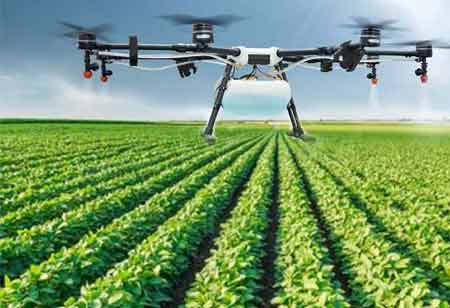Thank you for Subscribing to Agri Business Review Weekly Brief
Best Practices for Agriculture Sustainability
Industrial agriculture, which is typified by massive monocultures used as animal feed, high concentrations fertilizers pesticides and fertilizers, and CAFOs where living things are treated like nothing more than products, had evolved into the new.

By
Agri Business Review | Wednesday, February 01, 2023
Stay ahead of the industry with exclusive feature stories on the top companies, expert insights and the latest news delivered straight to your inbox. Subscribe today.
As global climate change evolves, sustainable agriculture aims to ensure our food system continues to provide food for future generations.
FREMONT, CA: Industrial agriculture, which is typified by massive monocultures used as animal feed, high concentrations fertilizers pesticides and fertilizers, and CAFOs where living things are treated like nothing more than products, had evolved into the new face of the US food system. Massive businesses managed these machine-like activities with enormous financial and political clout instead of small farmers.
Farms started to change in the early 1900s as the Industrial Revolution spread throughout the United States. Monocultures, which are enormous fields of a single, identical crop, have begun to replace vibrant, colorful fields bursting with various fruits and vegetables. Garden compost was used to feed nutrient-rich soil but eventually become thin and lifeless. And instead of idyllic farm fields, huge windowless shelters known as Concentrated Animal Feeding Operations (CAFOs) – all crammed as closely as possible with suffering animals — took their place.
Sustainable agriculture is a paradigm shift that tries to work in harmony with the environment rather than extracting as many resources as possible to build an autonomous system that will last for future generations. This entails abandoning our current intense, animal-focused agriculture system and favoring a more effective, harmonic, and plant-focused one. Notably, environmentally friendly and plant-centered agriculture methods are resilient to extreme weather, drought, and flooding while helping to prevent catastrophic climate change.
Whatever its exact definition, sustainable agriculture should be viewed as a continual concept and practice that informs every choice and action taken on a farm. Here are a few methods by which farmers can regularly engage in sustainable agriculture.
"No-till" agriculture
Recall the significance of maintaining soil health. Farmers can avoid disturbing the soil, minimizing erosion, and boosting biological activity by reducing or eliminating tillage. The USDA claims that soil that has been allowed to naturally decompose frequently has more organic matter than soil that has been traditionally tilled. In addition to saving time and money, this approach is more sustainable for farmers.
Planting perennials with cover crops
Planting cover crops is another method for defending, nourishing, and restoring the soil. Cover crops limit soil runoff and trap in nutrients by erecting a protective canopy; over time, this improves soil structure, stability, and moisture. Common cover crops include clovers, turnips, mustard, buckwheat, alfalfa, and radishes. These plants are typically sown in the fall or winter to shield delicate soil from wind and snow.
Crop rotation and promotion of a variety
Diverse types of life are intended to support one another's numerous processes throughout ecosystems, which are expected to live as interdependent, resilient communities. However, modern intensive agriculture looks completely different. It promotes monocultures or huge fields of a single crop—typically maize, soybeans, or wheat—and is always motivated by profit and efficiency. These plants lack the biodiversity that safeguards plants in the natural world, making them particularly susceptible to disease and pests.
Polyculture and crop rotation, which strengthen the soil and aid in controlling disease and insect infestations, can help farmers modify this. Additionally, farms with greater economic diversity are less likely to become entirely dependent on a single, risky commodity. They are less likely to experience price changes due to shifting supply and demand.
Unfortunately, the current system of industrial animal husbandry and its marketing is extremely powerful. Words like "grass-fed beef," "regeneratively grown," and "sustainably sourced" have become very popular in the past several years. The meat business now has a nice justification for continuing producing hamburgers and emissions: the possibility that regenerative ranching could help solve the climate problem. Simply said, switching to grass-fed beef is not a fix. Instead of sending money to Big Ag, choosing a plant-based diet can direct it to initiatives like Halley Farm that aim to diversify and enhance our food supply.





